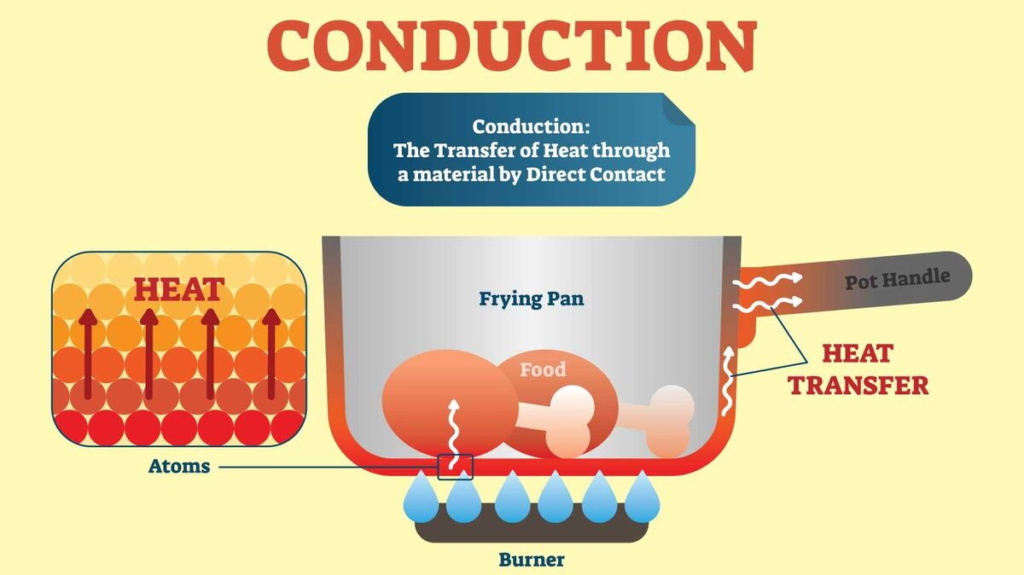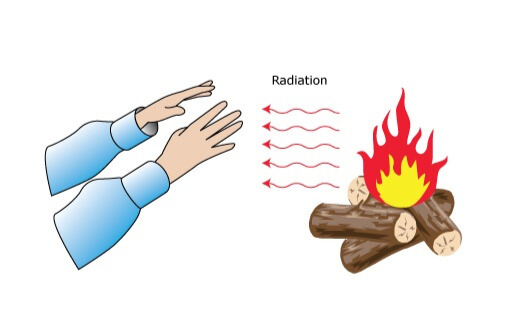Transfer Of Heat
transfer of heat by Delta publications
Key Notes :
Definition of Heat:
- Heat is a form of energy that flows from a hotter object to a cooler one until they reach the same temperature.
- It is measured in units called joules (J) or calories (cal).
Methods of Heat Transfer:

- Heat can be transferred in three different ways:
- Conduction
- Convection
- Radiation
Conduction:

- Occurs mainly in solids, especially metals.
- Heat is transferred from one particle to another by direct contact.
- Good conductors (e.g., copper, aluminum) allow heat to pass through easily, while insulators (e.g., wood, plastic) do not.
- Example: A metal spoon in hot water becomes warm due to conduction.
Convection:

- Occurs in liquids and gases.
- Heat is transferred by the movement of heated particles within the fluid.
- Warm fluid becomes less dense and rises, while cooler fluid sinks, creating a convection current.
- Example: Boiling water forms bubbles as the hotter water rises and cooler water sinks.
Radiation:

- Transfer of heat through electromagnetic waves (e.g., infrared rays).
- Does not require a medium (i.e., can occur in a vacuum).
- Example: Heat from the Sun reaches Earth through radiation.
Differences between the Three Methods:
- Conduction needs direct contact, convection involves fluid movement, and radiation does not need any medium.
- Conduction is fastest in solids, convection in liquids/gases, and radiation can occur through space.
Practical Applications:
- Conduction: Cooking pans are made of metal to transfer heat efficiently.
- Convection: Heaters and air conditioners circulate air through convection currents.
- Radiation: Solar panels use sunlight to generate electricity.
Insulation:
- Materials that prevent heat transfer are called insulators.
- Insulators (like wool, fiberglass, and foam) help keep buildings warm in winter and cool in summer.
Everyday Examples:
- Conduction: Touching a hot metal rod.
- Convection: Warm air rising and cool air falling in a room.
- Radiation: Feeling the warmth of the Sun on your face.
Importance of Heat Transfer:
- Understanding heat transfer helps in designing better homes, vehicles, clothing, and appliances to conserve energy.
Let’s practice!

